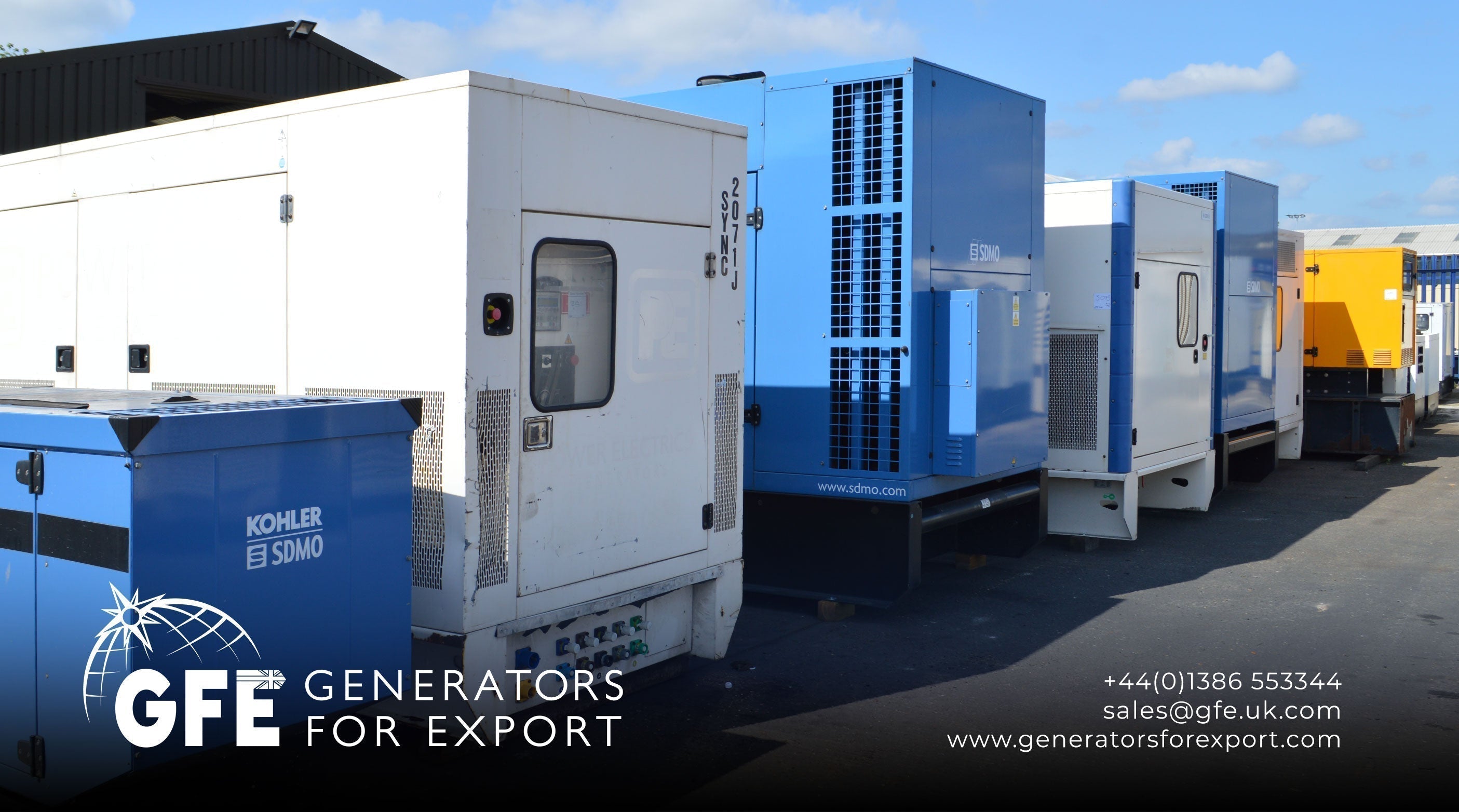Essential Steps to Stay Safe and Prepared
Power cuts can happen at any time, leaving homes and businesses without electricity for hours or even days. Whether caused by storms, grid failures, or unexpected technical faults, a power outage can disrupt daily life and create safety concerns. Knowing how to respond to a power cut effectively can help keep your household or business running smoothly.
At Generators For Export, we specialise in supplying high-quality used diesel generators to keep businesses and homes powered during outages. In this guide, we’ll cover essential steps to take before, during, and after a power cut to stay safe and minimise disruption.
Before a Power Cut: Be Prepared
A little preparation can make a huge difference when the power goes out unexpectedly. Here’s what you can do in advance:
Invest in a Backup Power Source
- A used diesel generator is a cost-effective way to ensure continuous power supply.
- Businesses should consider an automatic standby generator to avoid downtime.
- Homeowners can benefit from smaller, portable generators to power essential appliances.
Assemble an Emergency Kit
- Keep a well-stocked emergency kit in an accessible location. It should include:
- Flashlights with spare batteries
- A battery-powered or wind-up radio
- Power banks for charging mobile phones
- A first aid kit and essential medications
- Non-perishable food and bottled water
- Extra blankets and warm clothing (for winter outages)
Protect Your Electrical Equipment
- Use surge protectors to safeguard electronics from voltage spikes when power is restored.
- Keep important devices like mobile phones and laptops charged if a power cut seems likely.
- Consider a UPS (Uninterruptible Power Supply) for critical electronics.
Stay Informed
- Sign up for power outage alerts from your energy provider.
- Monitor weather forecasts, especially if you live in an area prone to storms.
- Learn how to manually open garage doors and electronic gates.
During a Power Cut: Stay Safe and Minimise Disruption
When the power goes out, follow these steps to ensure safety and comfort:
Confirm the Extent of the Outage
- Check whether it’s just your property or a wider issue by looking at nearby streetlights and neighbours’ homes.
- Contact your electricity provider to report the outage and get updates.
- If it’s just your property, check the fuse box for any tripped circuit breakers.
Use Alternative Light Sources
- Avoid using candles due to fire hazards, battery-powered lanterns or LED torches are safer.
- If candles are necessary, keep them away from flammable materials and never leave them unattended.
Preserve Perishable Foods
- Keep refrigerator and freezer doors closed as much as possible.
- A closed fridge can keep food cold for up to 4 hours; a full freezer stays frozen for 24-48 hours.
- If the outage lasts longer, consider using a generator to power essential appliances.
Maintain Comfortable Temperatures
- In cold weather, wear multiple layers, use blankets, and stay in a single insulated room.
- During hot weather, drink plenty of water, keep curtains closed, and use battery-operated fans if available.
Disconnect Electronics
- Unplug devices such as TVs, computers, and appliances to prevent damage from power surges when electricity is restored.
- Leave one light switched on so you’ll know when power is back.
Use Generators Safely
- Never run a generator indoors or in enclosed spaces, this can lead to deadly carbon monoxide poisoning.
- Place the generator outside, well away from doors and windows, and ensure proper ventilation.
- Follow the manufacturer’s instructions for safe fuel storage and operation.
After a Power Cut: Restore Normalcy and Prevent Future Issues
Once power is restored, take these steps to safely return to normal operations:
Turn Appliances Back On Gradually
- Plug in and turn on appliances one at a time to avoid overloading the electrical system.
- Reset clocks, alarms, and internet routers if necessary.
Restock Emergency Supplies
- Replace any used batteries and emergency food items.
- Recharge power banks and ensure flashlights are working.
Maintain Your Generator
- If you used a generator during the power cut, check its oil and fuel levels before storing it.
- Schedule regular maintenance to ensure it’s ready for future use.
Be Ready for the Unexpected
Power cuts can be inconvenient, but with the right preparation, they don’t have to be a major disruption. Investing in a reliable used diesel generator from Generators For Export ensures that your home or business remains powered when the grid fails.
We supply high-quality, cost-effective used generators for various applications, from small homes to large commercial operations. Browse our inventory today or get in touch with our team for expert advice on choosing the right backup power solution.
Call: +44(0)1386 553344 | Email: sales@gfe.uk.com
Frequently Asked Questions:
How long do power cuts usually last?
It depends on the cause. Minor issues may be resolved in minutes, while major faults or storm damage can take hours or even days.
Can I run my generator overnight?
Yes, but only if it’s designed for extended use and is properly ventilated. Always follow safety guidelines and manufacturer instructions.
What size generator do I need for my home or business?
The right generator size depends on your power requirements. Contact Generators For Export for expert advice on choosing the best used generator for your needs.
By following these steps, you’ll be prepared for power outages and ensure safety, comfort, and minimal disruption. Stay powered with Generators For Export, your trusted supplier of high-quality used generators.

